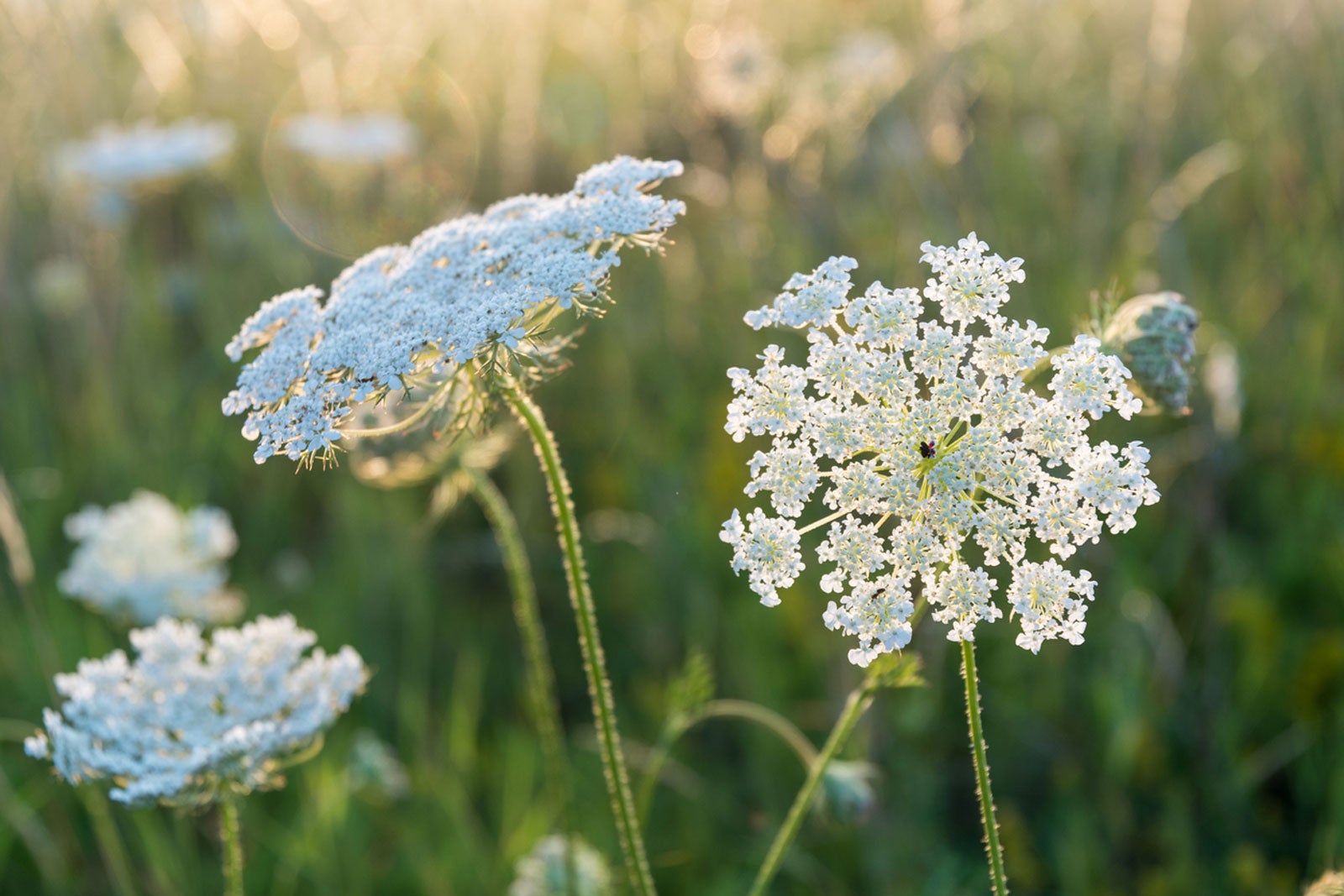Queen Anne’s Lace: A Delicate Beauty with a Dangerous Side
Queen Anne’s lace, a delicate, lacy-white flower often found in meadows and fields, is a captivating sight. Its intricate patterns and historical significance have made it a beloved plant for many. However, beneath its alluring appearance lies a hidden danger. This article will delve into the fascinating world of Queen Anne’s lace, exploring its botanical characteristics, historical context, medicinal uses, and potential toxicity.

Queen Anne’s lace, scientifically known as Daucus carota, is a biennial herb belonging to the Apiaceae family. It is closely related to the cultivated carrot and shares many of its characteristics. The plant typically grows to a height of 2-3 feet, with a slender, hairy stem and finely divided, fern-like leaves. Its most distinctive feature is the flat, lace-like umbel of tiny white flowers, which can measure up to 4 inches in diameter.
One interesting characteristic of Queen Anne’s lace is its polymorphism. This means that the plant can exhibit variations in its appearance, depending on environmental factors and genetic differences. For example, some individuals may have a single, purple flower at the center of the umbel, a trait that is believed to be a genetic mutation.
The name “Queen Anne’s lace” is derived from a legend that associates the plant with Queen Anne of Great Britain. According to the story, the queen pricked her finger while embroidering lace, and a drop of blood fell onto the fabric, creating a pattern similar to the flower’s umbel. While the veracity of this legend is uncertain, it has contributed to the plant’s enduring popularity.

Queen Anne’s lace has a long history of use as a medicinal herb. The ancient Romans and Greeks employed it to treat various ailments, including digestive problems, skin conditions, and respiratory infections. In traditional medicine, the plant’s roots, leaves, and seeds have been used to promote wound healing, relieve pain, and improve appetite.
Modern research has confirmed some of the traditional medicinal properties of Queen Anne’s lace. Studies have shown that the plant contains compounds with antioxidant, anti-inflammatory, and antimicrobial activities. These compounds may contribute to its potential benefits for skin health, digestive health, and immune function.
However, it is important to note that Queen Anne’s lace can be toxic if consumed in large quantities. The plant contains a substance called carotolin, which can cause gastrointestinal distress, including nausea, vomiting, and diarrhea. Pregnant and breastfeeding women should avoid consuming Queen Anne’s lace due to the potential risks to the fetus or infant.
:max_bytes(150000):strip_icc()/queen-annes-lace-guide-7111019_01-6b6a81a8695e4d63bfaf2f62dfad3c0f.jpg)
To minimize the risk of toxicity, it is essential to consume Queen Anne’s lace in moderation and under the guidance of a healthcare professional. The plant should not be confused with its poisonous look-alike, poison hemlock, which has a smooth, hollow stem and lacks the lacy appearance of Queen Anne’s lace.
If you experience any adverse symptoms after consuming Queen Anne’s lace, seek medical attention immediately.
Queen Anne’s lace is a beautiful and intriguing plant with a rich history of medicinal use. While it offers potential health benefits, it is important to be aware of its toxicity and consume it with caution. By understanding the botanical characteristics, historical significance, medicinal properties, and safety considerations of this plant, we can appreciate its beauty and potential benefits while minimizing the risks associated with its consumption.

:strip_icc()/Star-Jasmine-Bb09HQPpasXBPjzYMW55cV-cae2b5707aa74a3ba328959ad0357284.jpg?w=200&resize=200,112&ssl=1)




